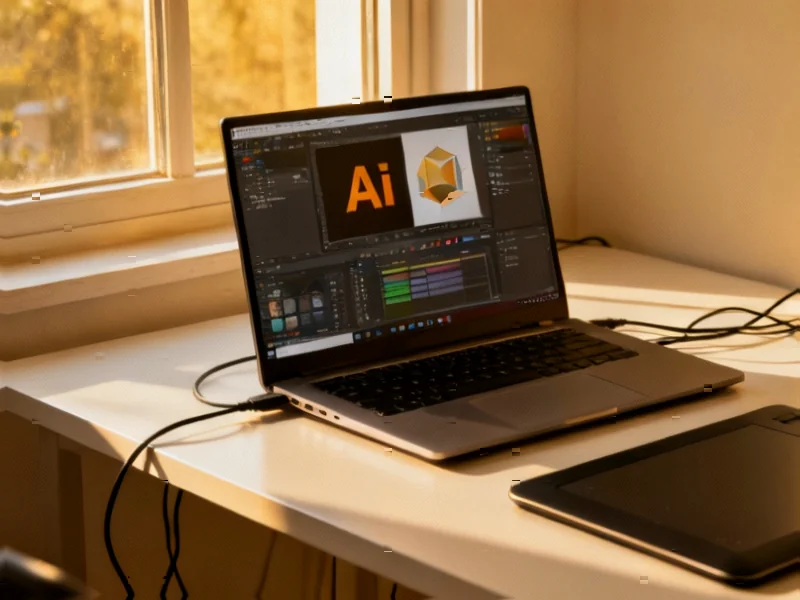According to AppleInsider, Adobe is dramatically expanding its generative AI capabilities across Firefly, Creative Cloud, and enterprise tools with new updates focused on accelerating workflows and integrating content creation. At Adobe MAX 2025, the company revealed Firefly now supports full video and audio production workflows, including Generate Soundtrack for creating licensed instrumental tracks and Generate Speech for realistic voiceovers, both currently in public beta. New integrations bring partner models from Black Forest Labs FLUX.1 Kontext and Google Gemini 2.5 Flash into Photoshop’s Generative Fill, while Premiere Pro gains AI Object Mask for automatic object isolation. The company also announced a YouTube partnership for Premiere mobile app integration and expanded enterprise capabilities through Firefly Foundry for training private AI models, with many features currently in either public or private beta testing phases. These developments represent Adobe’s most comprehensive AI integration to date across its creative ecosystem.
Table of Contents
The Creative Workflow Revolution
What Adobe is building here goes far beyond simple feature additions—this represents a fundamental rethinking of the creative workflow itself. The integration of AI assistants throughout the Creative Cloud ecosystem suggests a future where human creativity directs AI execution, rather than creators manually performing every task. This shift from tool operator to creative director could dramatically change the skill sets required for content creation professionals. The ability to use natural language prompts for complex image edits and video production tasks means the technical barrier to high-quality content creation is collapsing rapidly.
The Rise of Enterprise Content Factories
Perhaps the most strategically significant development is Firefly Foundry and Custom Models, which enable businesses to train private AI models using proprietary data. This transforms Adobe from a creative tools provider to an enterprise content infrastructure platform. Companies can now build their own branded content generation systems that maintain visual consistency and brand safety at scale. For marketing departments and content teams, this could mean moving from creating individual assets to designing content generation systems that produce hundreds or thousands of variations automatically.
Competitive Landscape Implications
Adobe’s aggressive AI integration creates significant pressure across multiple competitive fronts. For standalone AI tools from companies like Runway and ElevenLabs (both now integrated into Adobe’s ecosystem), the choice becomes either partnership or direct competition with a fully integrated suite. More importantly, Adobe is positioning Creative Cloud as the central nervous system for AI-powered content creation, potentially marginalizing point solutions that don’t integrate seamlessly. The YouTube partnership specifically targets the booming short-form video market, directly challenging mobile-first editing apps that have dominated this space.
The Beta Testing Reality Check
While the feature announcements are impressive, it’s crucial to note that most are in various beta testing phases. The transition from promising demo to reliable production tool often reveals significant limitations in AI-generated content. Issues like visual artifacts in generated images, unnatural speech patterns in voice synthesis, and inconsistent style maintenance across multiple assets remain challenging problems. Early adopters should expect the typical iteration cycle of AI features—initial excitement followed by practical limitations discovery and gradual improvement.
Creative Control and Quality Concerns
The automation of creative tasks raises important questions about artistic integrity and quality standards. While Adobe emphasizes maintaining “complete creative control,” the reality is that AI-assisted workflows inevitably shift decision-making from human intuition to algorithmic interpretation. The risk of homogenized creative output—where AI tools converge on similar solutions—could undermine the unique visual styles that distinguish professional creators. Additionally, the legal landscape around AI training data and copyright remains uncertain, creating potential liability concerns for commercial users.
The Future Content Ecosystem
Looking forward, Adobe’s vision appears to be creating a closed-loop content ecosystem where ideas generated through tools like Project Moonlight flow seamlessly into production via AI assistants and emerge as finished content across multiple platforms. The early ChatGPT integrations suggest a future where third-party AI services become pluggable components within Adobe’s creative environment. This ecosystem approach could make Adobe the default platform for professional content creation, but also raises concerns about platform lock-in and dependency on Adobe’s AI infrastructure for critical creative workflows.



